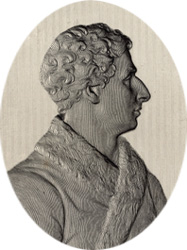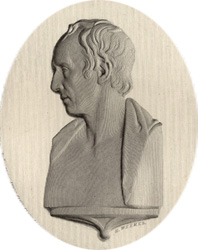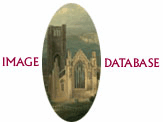|
|
Home | Corson Collection | Biography | Works | Image Collection | Recent Publications | Correspondence | Forthcoming Events | Links | E-texts | Contact Achille Collas (1795-1859)Born in Paris in 1795, the industrial designer Achille Collas first came to prominence as the inventor of a machine that carefully copied the relief and chiaroscuro of medallions and other bas-relief objects onto engraved steel plates, producing what Collas called a 'numismatic engraving'. Collas first exhibited samples obtained with this procedure at the Paris Salon of 1833 winning widespread acclaim. With the sponsorship of the influential Henriquel Dupont and Paul Delaroche, he embarked on his major project, the Trésor de numismatique et de glyptique (1834-50), a mammoth anthology of engravings of sculpture, reliefs, medals, coins, intaglios and seals. Collas was invited to employ the same method to reproduce the British Museum's collection of medals, but the project proved controversial and was the subject of a House of Commons enquiry. Critics claimed that Collas's machine produced distortions and championed an English rival, John Bate, whose 'anaglyptograph' was said to produce a less artistic but mathematically truer model. The enquiry proved inconclusive but the British Museum project fell through. Bate's method prevailed in Great Britain, but Collas, whose European reputation did not suffer, was responsible for one major British publication, The Authors of England (1838). This contained portraits of fourteen contemporary writers including Sir Walter Scott, Byron, Wordsworth, Coleridge, Shelley, and Southey, engraved after medallion portraits by Henry Weekes and E. W. Wyon.
Around 1836 Collas developed a new machine permitting the mathematically precise reduction or enlargement of sculptural objects in full relief. Three years later he demonstrated its abilities by producing a two-fifths size reproduction of the Venus de Milo. His device became the main vehicle for the mass replication of antique and modern sculptures catering for a growing demand for inexpensive luxury items to decorate bourgeois interiors. In 1838 he entered into partnership with the manufacturer Ferdinand Barbedienne (1810-92) and the firm of Collas eventually employed around 300 workers and produced over a thousand bronzes each year. They reached an international audience with an acclaimed exhibit at the Great Exhibition of 1851 in London, which featured as its centre-piece a half-size reproduction of Ghiberti's principal door to the Baptistery in Florence. Even after Collas's death in 1859, his 'method' remained the mainstay of Barbedienne's enduring commercial success throughout the latter part of the nineteenth century. Bibliography
Last updated: 02-Feb-2009 |
||||



